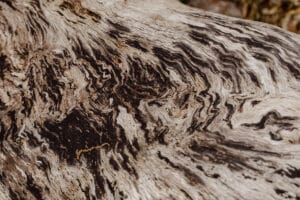It is often said that people are born creative…
…or they have a natural talent for art and design, but I don’t think that was necessarily the case with me. I was born in the early nineteen eighties on a small farm in Suffolk and for much of my youth, art and design were not my passions, nor did I find them particularly easily. While my brothers excelled in this area, I was far more interested in science and sport, deluding myself about having a career in professional football despite lacking the talent. In fact, I didn’t pursue design until my mid to late teens. At which point I had belatedly realised my sporting limitations, and seen that my other interests were converging on a career in design.
My design ethos was shaped by rural life
When I think back to my early upbringing, I can see how significant it was in the development of my beliefs and principles. Growing up on a small farm taught me the benefits of hard work and resourcefulness, but it also gave me a close relationship with the environment and wildlife, as well as an appreciation of how volatile and vulnerable nature can be. Farming is a 24/7 profession that must react and adapt to the seasons and weather. While you can control and mitigate against specific problems, a successful year is ultimately determined by how kind the weather has been. It is a constant reminder of how closely aligned we are with nature; a fact often lost in the design industry, which tends to operate in a fictitious world of abundance.
I consider myself to have had a privileged upbringing. Not in financial terms but in the sense that I was immersed in nature and experienced things daily that very few people get to see. At the time, I took many of my childhood experiences for granted; after all, they were part of my daily routine. But with time to reflect, I have realised their significance. As a child, there are few sights as fascinating as a calf or lamb being born and few as sobering as seeing an animal die. But life on a small farm also gives you an intimate view of other natural worlds that might otherwise pass unnoticed. I remember the golden orioles – a rare bird, with bright yellow and black feathers – nesting in the poplar trees next to one of our fields, and the swallows that arrived each spring and migrated in the autumn, accumulating on the power lines in vast numbers before leaving en masse to warmer climes.
Yes, nature is brutal but there are limits that allow it to thrive
That said, I often feel that people have a habit of overly romanticising nature. Yes, it is truly remarkable, and we should do everything we can to protect its beautiful complexities. But nature can be brutal. Nature sets the limits and boundaries of all forms of life on earth, and through human ingenuity and access to cheap and reliable energy, we have managed to circumnavigate many of those limitations. I say this from two perspectives. Firstly, we should not overlook humanity’s ingenuity in reducing risks, improving health, growing populations and extending our life expectancy. Make no mistake. Life before the 19th Century was harsh, and much of the world lived hand to mouth. But the challenge is that humanity is starting to exceed the planetary boundaries, and we have a choice. Either we impose boundaries on ourselves, or nature decides with catastrophic consequences.
We understand the interconnectedness of the internet more than nature
Humanity needs to reconnect with nature and become more respectful of the limits and systems on which the earth operates. But that is a complex and difficult task. A few years ago, I was speaking to a climate change journalist who told me that from his experience, ‘people understand the interconnected nature of the world wide web. But there isn’t that understanding of the natural world.’ We’ve become disengaged and mentally cut off from nature, unaware of the damage we are committing. But in actuality, we are not severed from nature or the impacts of our negligence.
As the design industry has become increasingly driven by consumerism and profit, the detachment from the natural world has become greater and greater. In failing to recognise the adverse effects of the design industry, and the roles that the linear system and consumption play, we are storing up long-term environmental problems. To further exacerbate the problem, the longer we wait to act, the more humanity becomes disconnected, disaffected and less able to understand the complexities and nuances of the problem. We are in danger of creating a society that doesn’t have the knowledge and resilience to deal with the challenges now that they have become a crisis. You might say that the world is waking up to the problem and that environmental and ethical discussions are in the mainstream. Still, when you analyse the content of the solutions on offer, they are often devoid of meaningful impact and centred on the belief that we can buy ourselves out of the problem by sticking with the status quo and buying smarter. If we are to address the environmental tsunami that is heading our way, it is crucial that we find a way to reconnect humanity with the natural world.
We forgot the rules – put back what you take…
In a century and a half of abundant resources, we have never had to think about the price of environmental externalities – until now. But as resources become scarcer – as a result of linear consumption and increased demand – we are starting to realise the extent of our impact on the environment. That pollution, CO2, soil erosion and waste have a real cost to society. In a world of limited resources, humans have largely failed in their role as custodians of Earth’s materials and assets. Our current economic model is at odds with the environment, accumulating short-term capital wealth whilst compromising long-term environmental and social prosperity. We have lost sight of the basic rules of nature where we take, and we give back, choosing to operate outside of its boundaries, in a fictitious world of infinite resources.
The system that underpins the global economy in linear, extractive and fundamentally destructive. Realignment and recalibration are required. A system that takes and gives back. A system that acknowledges the vulnerability of humanity and prepares for the long road ahead.
Regenerative design is just good design – it makes sense
There have always been very practical strategies that the design industry can take to foster a more regenerative approach. Often these are ignored in the mis-belief that ‘sustainable design’ is more costly or the materials impractical or unfashionable. In reality, none of those things hold true. From the outset, our studio adopted circular design principles guided by the cradle-to-cradle philosophy. Our award-winning ‘design for disassembly’ process saves carbon, materials and money. When materials are easy to repair, refurbish, reuse and recycle, we can minimise environmental impacts, simultaneously bringing commercial benefits.
You might say that working in the world of interior design for luxury hotels and hospitality spaces is a long way from my farm upbringing in the Suffolk countryside. But it was there that the passion for nature and the understanding of interconnectedness in the natural world was fired. And it’s here, in the design world, that I get to take that learning and apply it to projects that might otherwise fall back on the linear, extractive way of doing things. I get to make a difference in an industry that traditionally gives far more prominence to fads and fashions, than regard to its impact on people and the natural world. It’s in my role as a designer that I get to help influence an industry that feels ready to make the changes that we all know, are so definitively needed.




